-
 Bitcoin
Bitcoin $106,754.6083
1.33% -
 Ethereum
Ethereum $2,625.8249
3.80% -
 Tether USDt
Tether USDt $1.0001
-0.03% -
 XRP
XRP $2.1891
1.67% -
 BNB
BNB $654.5220
0.66% -
 Solana
Solana $156.9428
7.28% -
 USDC
USDC $0.9998
0.00% -
 Dogecoin
Dogecoin $0.1780
1.14% -
 TRON
TRON $0.2706
-0.16% -
 Cardano
Cardano $0.6470
2.77% -
 Hyperliquid
Hyperliquid $44.6467
10.24% -
 Sui
Sui $3.1128
3.86% -
 Bitcoin Cash
Bitcoin Cash $455.7646
3.00% -
 Chainlink
Chainlink $13.6858
4.08% -
 UNUS SED LEO
UNUS SED LEO $9.2682
0.21% -
 Avalanche
Avalanche $19.7433
3.79% -
 Stellar
Stellar $0.2616
1.64% -
 Toncoin
Toncoin $3.0222
2.19% -
 Shiba Inu
Shiba Inu $0.0...01220
1.49% -
 Hedera
Hedera $0.1580
2.75% -
 Litecoin
Litecoin $87.4964
2.29% -
 Polkadot
Polkadot $3.8958
3.05% -
 Ethena USDe
Ethena USDe $1.0000
-0.04% -
 Monero
Monero $317.2263
0.26% -
 Bitget Token
Bitget Token $4.5985
1.68% -
 Dai
Dai $0.9999
0.00% -
 Pepe
Pepe $0.0...01140
2.44% -
 Uniswap
Uniswap $7.6065
5.29% -
 Pi
Pi $0.6042
-2.00% -
 Aave
Aave $289.6343
6.02%
What should I do if the long arrangement of the moving average is destroyed? Is the trend over?
A broken long arrangement in crypto signals potential trend weakness, but confirmation through volume, price action, and momentum indicators is crucial before assuming a reversal.
Jun 19, 2025 at 11:14 pm
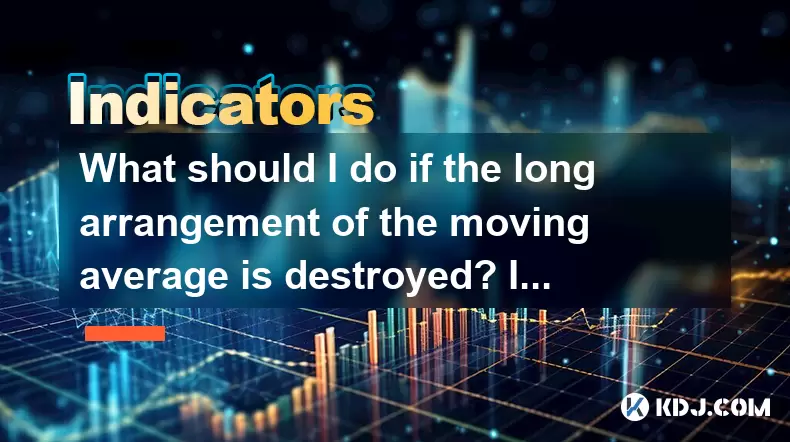
Understanding the Long Arrangement of Moving Averages
The long arrangement, also known as the Golden Cross alignment, refers to a specific sequence of multiple moving averages (MAs) stacked in ascending order from the shortest time frame to the longest. For instance, a typical long arrangement might consist of the 10-day, 20-day, 50-day, and 200-day MAs arranged so that each shorter-term MA is above the next longer-term one. This setup signals a strong bullish trend in cryptocurrency markets.
When traders refer to the long arrangement being "destroyed," they usually mean that this sequential stacking has been disrupted—either through crossovers or a compression of the moving averages. This often raises concerns about whether the prevailing uptrend is ending or if it's just a temporary retracement.
Important: The destruction of a long arrangement doesn't automatically signal the end of a trend. It may indicate a weakening momentum or a consolidation phase.
What Causes the Long Arrangement to Break?
Several market conditions can lead to the breakdown of a long arrangement:
- Market corrections: Temporary pullbacks after extended rallies.
- Volume spikes: Sudden surges in selling pressure can cause short-term MAs to dip below longer ones.
- News events: Regulatory changes, exchange outages, or macroeconomic news can trigger volatility.
- Profit-taking: Traders closing positions after significant gains can reduce upward momentum.
These factors can cause key moving averages like the 50-day or 20-day to cross below their longer counterparts, thereby breaking the long arrangement.
Important: Always analyze volume and price action alongside moving average behavior to avoid false signals.
How to Confirm If the Trend Is Truly Over
Before concluding that the bullish trend has ended, consider the following indicators and actions:
- Price closes below the 200-day MA: This is often seen as a bearish sign, especially if sustained over several days.
- Crossover of key MAs: For example, the 50-day crossing below the 200-day MA (a bearish death cross).
- Divergence with momentum indicators: Tools like RSI or MACD can show whether momentum supports the broken MA structure.
- Volume patterns: A sharp increase in volume during a drop may suggest institutional selling.
Traders should not rely solely on moving average arrangements but instead combine them with other tools for confirmation.
Important: No single indicator should be used in isolation; always seek confluence between different technical signals.
Steps to Take When the Long Arrangement Is Broken
If you notice the long arrangement has been destroyed, follow these steps:
- Reassess your position size: Consider reducing exposure or tightening stop-loss levels.
- Check for support zones: Look at previous resistance-turned-support levels or Fibonacci retracements.
- Review chart patterns: Identify whether the price is forming a flag, triangle, or head-and-shoulders pattern.
- Monitor trading volume: Determine if the sell-off is aggressive or merely a pause.
- Evaluate alternative time frames: Check the weekly and daily charts to see if the breakdown is consistent across both.
Each of these steps helps determine whether the trend is reversing or merely pausing before continuing.
How to Protect Your Portfolio During MA Breakdowns
To safeguard investments when moving average alignments are broken:
- Use trailing stops: These allow profits to run while protecting against sudden reversals.
- Hedge with stablecoins or inverse tokens: Holding USDT or using short BTC/ETH tokens can offset downside risk.
- Diversify across assets: Don’t put all capital into one cryptocurrency; spread across sectors like DeFi, Layer 1s, and NFTs.
- Set alerts on key MAs: Use platforms like TradingView to receive notifications when important levels are breached.
- Maintain emotional discipline: Avoid panic selling based on a single indicator flip.
By preparing in advance, investors can manage risk more effectively during volatile periods.
Important: Emotional decisions during MA breakdowns can lead to unnecessary losses.
Alternative Strategies After the Long Arrangement Is Gone
Once the long arrangement is no longer intact, consider the following strategies:
- Range trading: If the price stabilizes between two boundaries, look for opportunities near support and resistance.
- Mean reversion plays: Use oscillators like RSI or Bollinger Bands to identify oversold conditions.
- Wait for a new setup: Be patient until a fresh trend emerges with clear direction and volume support.
- Switch to lower time frames: Day traders can still find opportunities even if the larger trend is unclear.
- Focus on leading altcoins: Some cryptocurrencies may continue to perform well despite broader market weakness.
These approaches help maintain trading activity without forcing trades during uncertain times.
Frequently Asked Questions
Q: Can a broken long arrangement ever re-form?
Yes, after a correction or consolidation period, the moving averages can re-align in the original upward sequence if the trend resumes.
Q: Should I close my entire position if the long arrangement breaks?
Not necessarily. Evaluate the broader context and adjust position size rather than exiting entirely unless there's strong reversal evidence.
Q: Are certain moving average combinations better for tracking trends in crypto?
Many traders use combinations like the 10, 20, 50, and 200-day MAs, but some prefer exponential moving averages (EMAs) for faster responses to price changes.
Q: How reliable are moving averages in highly volatile crypto markets?
While moving averages can lag in fast-moving environments, they remain useful when combined with volume and momentum indicators.
Disclaimer:info@kdj.com
The information provided is not trading advice. kdj.com does not assume any responsibility for any investments made based on the information provided in this article. Cryptocurrencies are highly volatile and it is highly recommended that you invest with caution after thorough research!
If you believe that the content used on this website infringes your copyright, please contact us immediately (info@kdj.com) and we will delete it promptly.
- RUVI AI: The Audited Solana Token Promising to Outshine Bitcoin
- 2025-06-20 04:25:12
- SEI Price Surges Amid WYST Stablecoin Buzz: What's Next for Sei Network?
- 2025-06-20 04:25:12
- Stablecoin Revolution: US Senate Paves the Way with Federal Law
- 2025-06-20 04:45:12
- Ripple, Coinbase, and Crypto Selloffs: What's the Deal?
- 2025-06-20 05:05:12
- Early-Stage Crypto Projects on Solana: Finding the Next Big Thing
- 2025-06-20 05:23:59
- Chainlink Price Prediction: Is the Accumulation Phase Here?
- 2025-06-20 05:45:12
Related knowledge
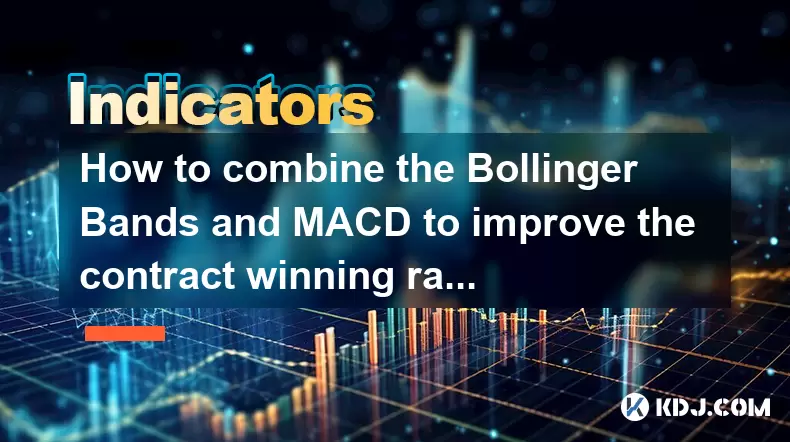
How to combine the Bollinger Bands and MACD to improve the contract winning rate?
Jun 19,2025 at 06:35pm
Understanding Bollinger Bands and MACD IndicatorsTo effectively combine Bollinger Bands and the MACD (Moving Average Convergence Divergence), it's essential to first understand what each indicator represents. Bollinger Bands consist of a middle moving average line and two outer bands that adjust based on market volatility. When prices move toward the up...

How does the long lower shadow of the K line indicate the formation of the bottom of the contract?
Jun 19,2025 at 05:00am
Understanding the Long Lower Shadow in K-Line AnalysisIn cryptocurrency trading, K-line analysis plays a pivotal role in determining market sentiment and potential price reversals. A long lower shadow, also known as a long wick, is one of the most telling candlestick patterns that traders look for when assessing whether a bottom might be forming in a co...
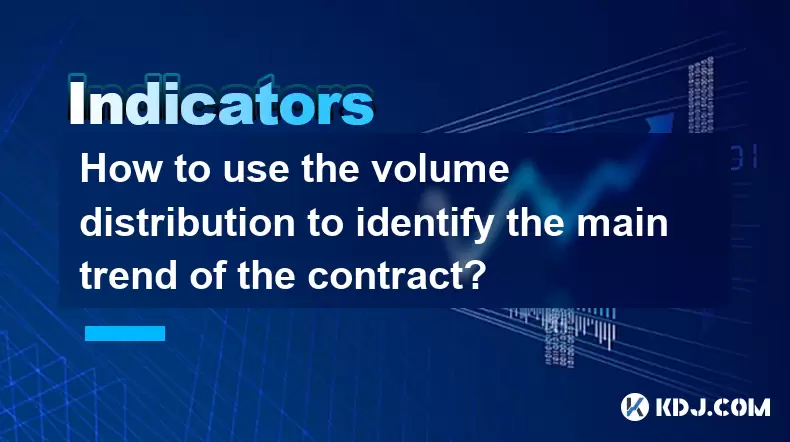
How to use the volume distribution to identify the main trend of the contract?
Jun 20,2025 at 03:56am
Understanding Volume Distribution in Cryptocurrency ContractsIn the realm of cryptocurrency trading, particularly within futures and perpetual contracts, volume distribution plays a pivotal role in deciphering market sentiment. Unlike spot markets, contract trading involves leveraged positions that can amplify both gains and losses. To navigate this com...
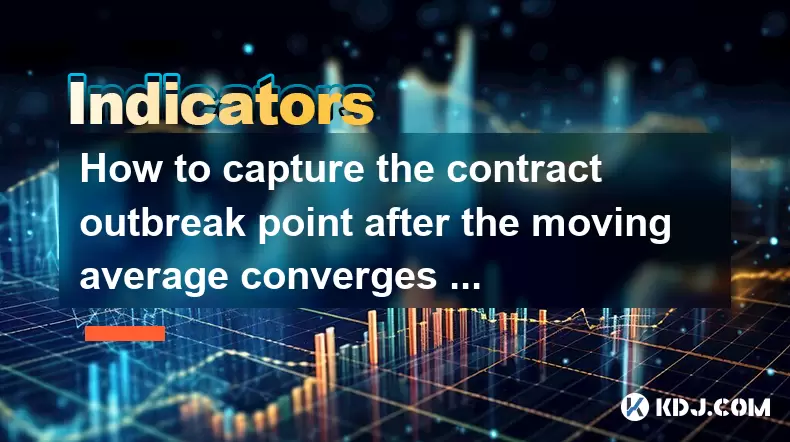
How to capture the contract outbreak point after the moving average converges and diverges?
Jun 19,2025 at 02:07pm
Understanding Moving Average Convergence and Divergence in Crypto TradingIn cryptocurrency trading, moving averages are among the most widely used technical indicators. The concept of convergence and divergence refers to how different moving averages align or separate over time. When short-term and long-term moving averages come together (converge), it ...
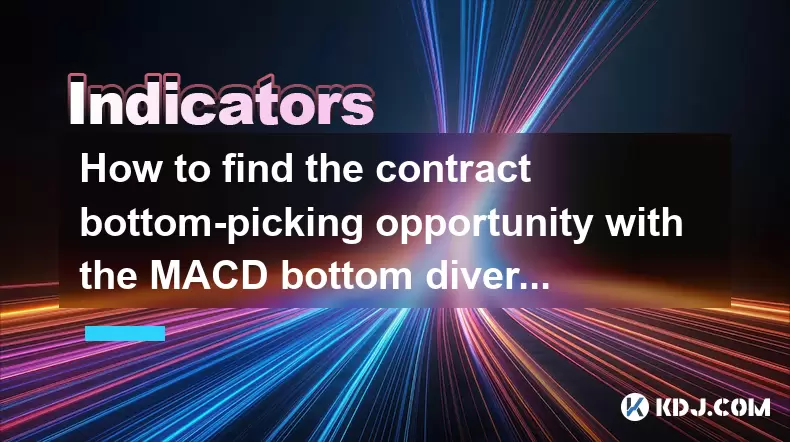
How to find the contract bottom-picking opportunity with the MACD bottom divergence?
Jun 19,2025 at 02:28pm
Understanding MACD Bottom Divergence in Cryptocurrency TradingMACD (Moving Average Convergence Divergence) is a widely used technical analysis tool that helps traders identify potential reversals in price trends. Bottom divergence, specifically, occurs when the price of an asset makes a new low, but the MACD indicator does not confirm this by making a c...

How to use the DEMARK indicator to predict the high and low points of the contract?
Jun 19,2025 at 04:21am
What Is the DEMARK Indicator?The DEMARK indicator is a technical analysis tool developed by Tom DeMark, aimed at identifying price exhaustion points in financial markets. It helps traders anticipate potential reversal zones, especially in volatile environments such as cryptocurrency contracts. The indicator works by detecting specific patterns and seque...

How to combine the Bollinger Bands and MACD to improve the contract winning rate?
Jun 19,2025 at 06:35pm
Understanding Bollinger Bands and MACD IndicatorsTo effectively combine Bollinger Bands and the MACD (Moving Average Convergence Divergence), it's essential to first understand what each indicator represents. Bollinger Bands consist of a middle moving average line and two outer bands that adjust based on market volatility. When prices move toward the up...

How does the long lower shadow of the K line indicate the formation of the bottom of the contract?
Jun 19,2025 at 05:00am
Understanding the Long Lower Shadow in K-Line AnalysisIn cryptocurrency trading, K-line analysis plays a pivotal role in determining market sentiment and potential price reversals. A long lower shadow, also known as a long wick, is one of the most telling candlestick patterns that traders look for when assessing whether a bottom might be forming in a co...

How to use the volume distribution to identify the main trend of the contract?
Jun 20,2025 at 03:56am
Understanding Volume Distribution in Cryptocurrency ContractsIn the realm of cryptocurrency trading, particularly within futures and perpetual contracts, volume distribution plays a pivotal role in deciphering market sentiment. Unlike spot markets, contract trading involves leveraged positions that can amplify both gains and losses. To navigate this com...

How to capture the contract outbreak point after the moving average converges and diverges?
Jun 19,2025 at 02:07pm
Understanding Moving Average Convergence and Divergence in Crypto TradingIn cryptocurrency trading, moving averages are among the most widely used technical indicators. The concept of convergence and divergence refers to how different moving averages align or separate over time. When short-term and long-term moving averages come together (converge), it ...

How to find the contract bottom-picking opportunity with the MACD bottom divergence?
Jun 19,2025 at 02:28pm
Understanding MACD Bottom Divergence in Cryptocurrency TradingMACD (Moving Average Convergence Divergence) is a widely used technical analysis tool that helps traders identify potential reversals in price trends. Bottom divergence, specifically, occurs when the price of an asset makes a new low, but the MACD indicator does not confirm this by making a c...

How to use the DEMARK indicator to predict the high and low points of the contract?
Jun 19,2025 at 04:21am
What Is the DEMARK Indicator?The DEMARK indicator is a technical analysis tool developed by Tom DeMark, aimed at identifying price exhaustion points in financial markets. It helps traders anticipate potential reversal zones, especially in volatile environments such as cryptocurrency contracts. The indicator works by detecting specific patterns and seque...
See all articles

























































































